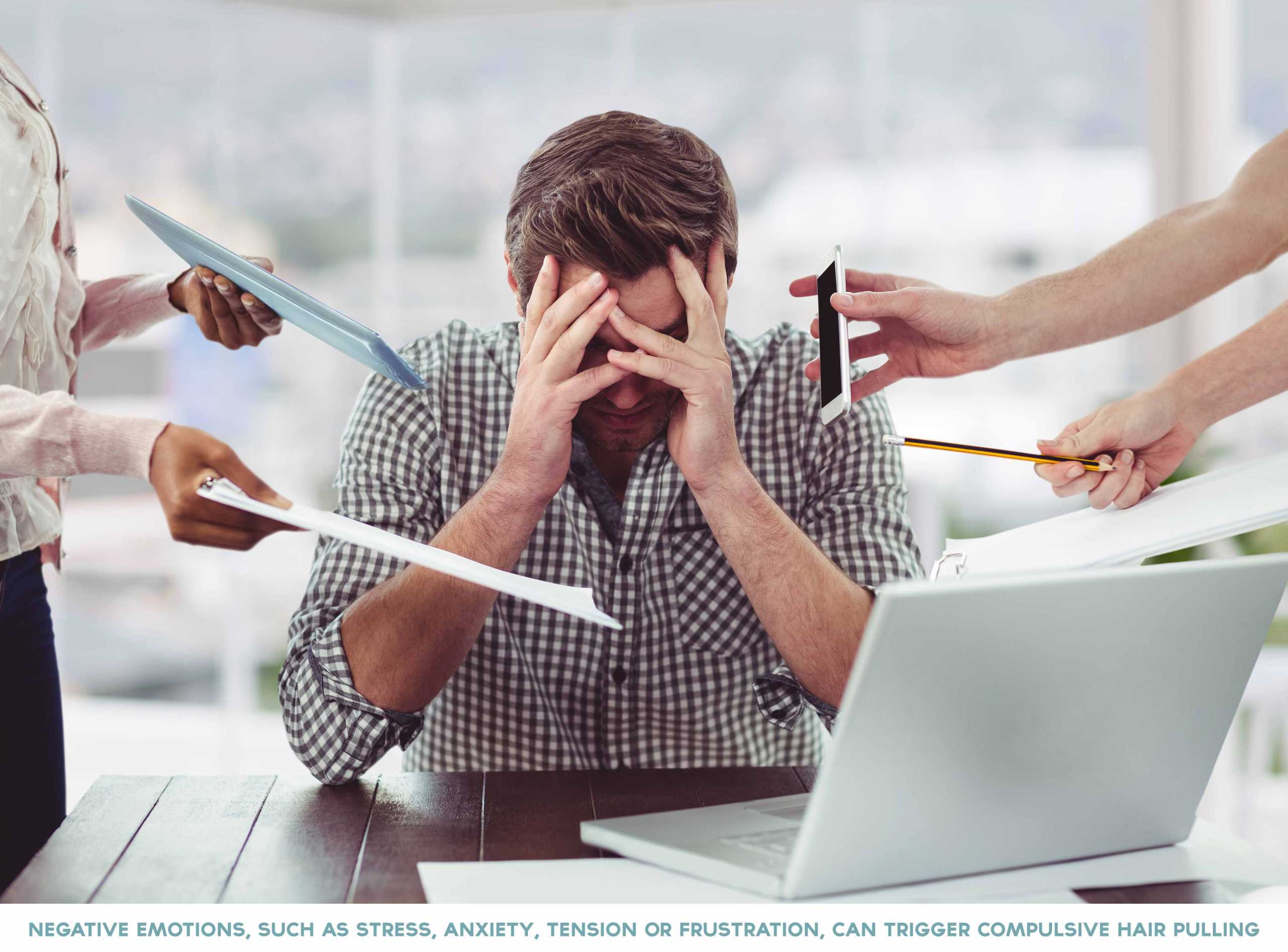Trichotillomania is described as a compulsive urge to pull out one’s hair. It can include hair on the scalp, eyebrows and/or eyelashes. The most affected population by this disorder tend to be female in their teens or early adulthood.
People who have this disorder often manifest symptoms such as an intense growing urge to pull out their hair that will only stop until they do. After pulling hair, they feel a sense of relief. This symptom often appears as a response to a stressful situation or can even be done without thinking about it
As we’ve mentioned above, hair pulling can occur in different body areas, including the scalp, eyebrows, eyelashes, beard or mustache, and even genital area.
This condition leaves behind bald patches that tend to have an unusual shape and may affect one side more than the other. Other consequences are feelings of shame and low self-esteem.
What Causes Trichotillomania?
- Anxiety.
- A chemical imbalance in the brain, similar to OCD (Obsessive-Compulsive Disorder).
- Hormonal level changes during puberty.
- A type of self-harm to seek relief from emotional distress.
- For some patients, hair pulling is a form of addiction; the more they pull hair out, the more they want to keep doing it.

How To Stop Compulsive Hair Pulling?
If you notice you or anyone close to you has this habit of hair pulling, please seek council with a general practitioner who will most likely point you towards a treatment called Cognitive-Behavioral Therapy (CBT).
The CBT treatment goal is habit reversal training, during which you will be able to replace a bad habit with something that is not harmful. The treatment generally includes the following:
- Keeping a diary of your hair-pulling.
- Working out the triggers for your hair pulling and learning how to avoid them.
- Replacing hair pulling with another action (squeezing a stress ball, fidget toy).
- Involving loved ones to provide emotional support.
You May Also Like: The Psychological Impact of Hair Loss
Once the urge is under control, and the hair-pulling has stopped for at least a year, you can schedule a consultation with us to see if you are a good candidate for a Hair Transplant or even Hair Biostimulation Therapy.

These options could effectively restore the bald area(s) left behind, so you can continue to enjoy a full-looking and thick hair. Contact us today! (858) 832 4016 / info@dhimexico.com







